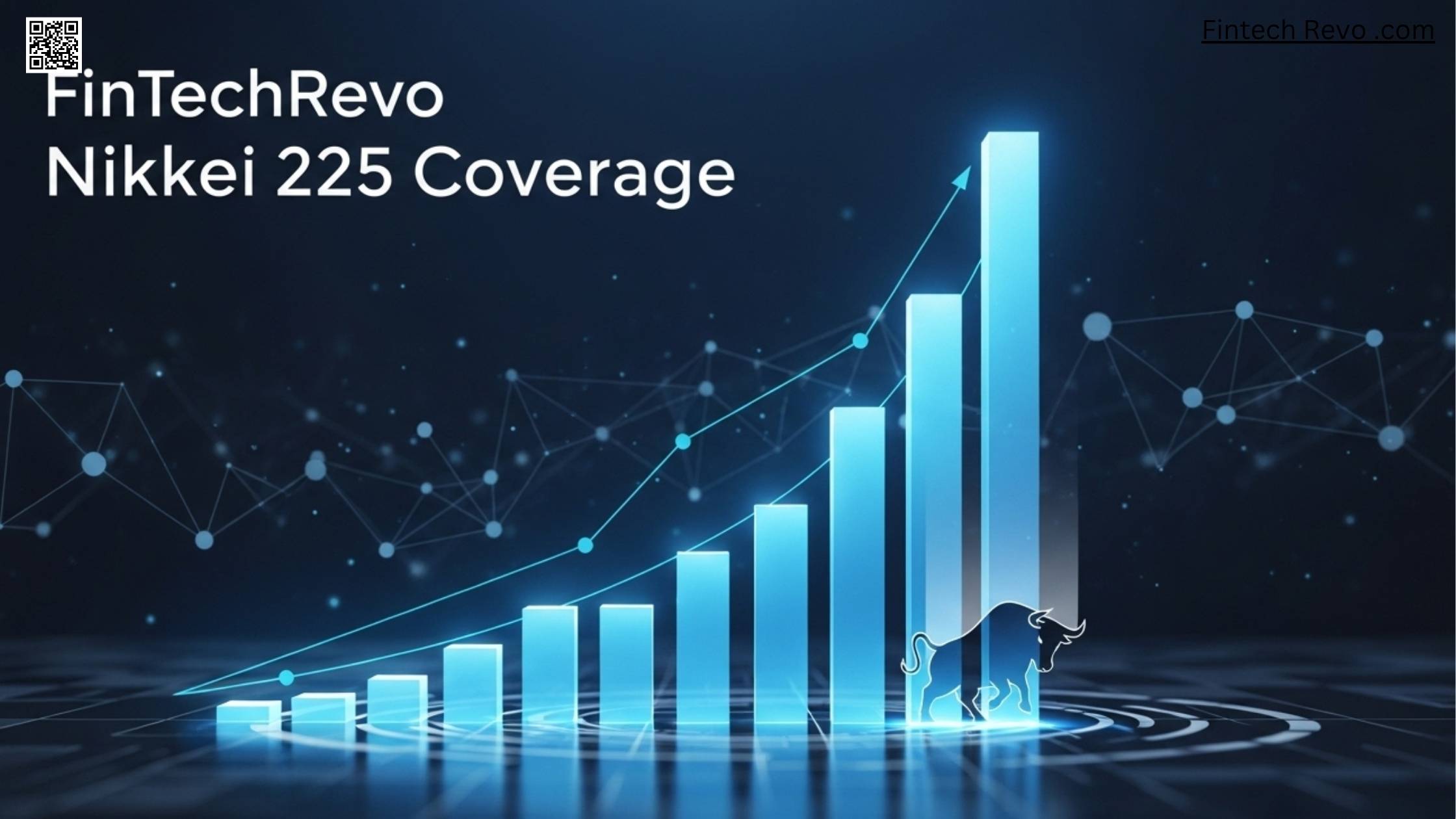FinTechRevo Nikkei 225 Coverage: Your Window into Japan’s Market Pulse
At FinTechRevo, we don’t limit our attention to U.S. markets. The financial world is global, and when it comes to Asia, Japan’s Nikkei 225 stands as one of the most important benchmarks we track.
The Nikkei isn’t just a list of companies. It’s a daily indicator of Japan’s economic health, business outlook, and global position in tech and manufacturing.
If you’ve only focused on domestic indexes before, this is the one to start watching to understand how global trends ripple outward.
What Is the Nikkei 225?
The Nikkei 225 is Japan’s top stock market index. It includes 225 of the largest and most actively traded companies listed on the Tokyo Stock Exchange.
You’ll find names like:
- Toyota
- Sony
- Honda
- SoftBank
- Panasonic
- Mitsubishi
These aren’t just household names in Japan — they’re brands that influence global markets, supply chains, and innovation cycles.
At FinTech Revo .Com, we treat the Nikkei 225 as more than an index. It’s a reliable lens into Asia-Pacific business sentiment.
Why the Nikkei 225 Matters Globally
Many investors look to the U.S. or Europe to understand economic direction. But ignoring Asia, especially Japan, leaves a major gap.

Here’s why we prioritize the Nikkei 225:
- It reflects trends in tech hardware, automotive, and global logistics
- Japan’s central bank policies often influence other regional economies
- Movements here can signal shifts in manufacturing demand worldwide
- It’s closely tied to currency movements and export strength
At FinTechRevo, we don’t just report what happened — we focus on how these movements affect other markets, including the U.S. and Europe.
How We Cover the Nikkei 225
We take a structured approach to monitoring and reporting on the Nikkei:
- Daily or weekly summaries with context, not just numbers
- Updates on the largest movers and why they changed
- Coverage of Bank of Japan announcements and policy moves
- Reactions to global trade headlines or geopolitical tension
- Sector breakdowns when shifts occur in tech, energy, or transport
FinTechRevo readers count on us to filter out the noise and focus on what matters. Learn about FinTechRevo FTSE 100.
What’s Different About the Nikkei 225?
Unlike U.S. indexes, the Nikkei is price-weighted, not market-cap weighted. This means companies with higher stock prices affect the index more, regardless of company size.
That changes the rhythm of the index. Some smaller companies with high share prices can move the needle more than expected. It also makes the index slightly more sensitive to short-term volatility.
At FinTechRevo, we explain these differences in plain terms so you can understand them even if you’re new to the index.
Recent Market Moves That Stood Out
We’ve tracked several key themes in recent Nikkei 225 movement:
1. Weak Yen, Strong Exporters
A weaker yen has helped major exporters like Toyota and Sony increase overseas profits. We explained how this currency dynamic lifted the entire index.
2. Bank of Japan Policy Surprise
When the central bank adjusted its yield curve controls, the Nikkei responded immediately. We showed which sectors gained and which pulled back.
3. Chip Shortage Recovery
As chip supply began normalizing, Japanese tech and manufacturing names responded with renewed strength. We covered how this influenced index movement for weeks.
These aren’t just headlines — they’re signals. And FinTechRevo decodes each one with clarity.
Who Should Follow This Page
If you invest globally or follow international business trends, this page belongs on your radar.
You’ll benefit if:
- You trade or monitor global ETFs or indexes
- Your business depends on supply chains linked to Japan
- You follow currency markets like USD/JPY
- You watch Japan’s central bank for macro policy trends
- You want a better grasp on how Asia affects your financial decisions
At FinTechRevo, we make this global perspective understandable, even for U.S.-focused readers.
How to Use This Page

We recommend checking this page at least once a week, especially when:
- Currency exchange rates are volatile
- You notice swings in automotive or electronics stocks
- There’s a major policy meeting in Japan
- Tensions rise in Asia-Pacific trade or manufacturing channels
FinTechRevo keeps this page updated with only the most important shifts — so it becomes a tool you can trust.
What Makes Our Coverage Different
Plenty of platforms track the Nikkei. But few explain it in terms that make sense outside Japan.
FinTechRevo bridges that gap by:
- Writing in plain, actionable language
- Highlighting only what’s useful
- Connecting Nikkei movement to real-world changes
- Avoiding speculation or filler
- Focusing on clarity, not commentary
We believe good reporting helps people make decisions, not just gather facts. Explore Dow Jones on FinTechRevo.com.
Final Thoughts
The Nikkei 225 offers insight into much more than Japanese stocks. It’s a daily reading on how a major global economy is reacting to real events.
FinTechRevo brings you that story clearly, directly, and without distractions. If you’re expanding your financial awareness to include global signals, this is the place to start.
Our goal isn’t to overwhelm you. It’s to give you the knowledge that matters — from Japan to your screen, in minutes.
This is FinTechRevo Nikkei 225. Simple, strong, and built for people who need clear answers, not complex analysis.
